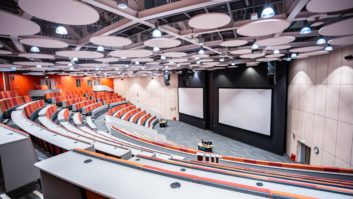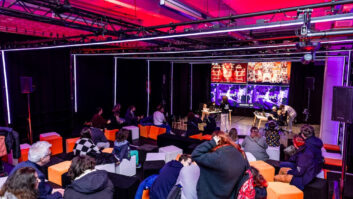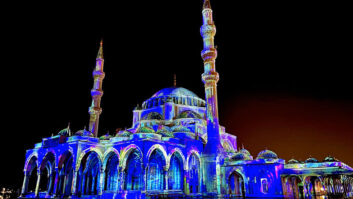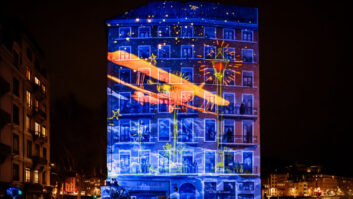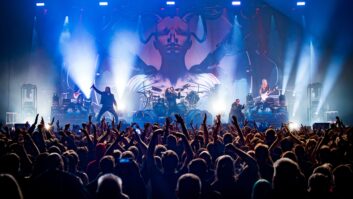Ross Ashton of UK-based The Projection Studio was commissioned by the Pittsburgh Cultural Trust to be the main artist for the 2010 Pittsburgh Festival of Lights, for which he produced four stunning projection works.
It’s Ashton’s first major work in the US and follows his installations at last year’s event for curators Marguerite Jarrett-Marks and Christopher Oberdorf and another that he produced for New Year’s Eve 2009/2010. The challenge was on to produce something that was completely different from anything in the past and that would engage the public as well as bring critical acclaim to the festival.
The Festival of Light was concentrated in The Cultural Quarter of the city, and the art works had to utilise existing architecture and spaces, which for projection purposes, were primarily confined to a series of flat-walled buildings.
“It was a great privilege to be asked to contribute as the lead artist and a very exhilarating task to be able to create bold, original pieces related to the life, vibrancy and culture of the city, with which people could engage and enjoy,” says Ashton.
Old Bones
The first piece was projected onto the Mahla Office Furniture building by two PIGI 6K projectors positioned side by side making one 50 m wide by 30 m high panoramic image, complete with double rotating scrollers.
The content was inspired by Ashton’s background in biology, taking the world class selection of ‘Type Specimens’ available at the city’s Carnegie Museum and its significance as one of the most important Palaeontology centres in the world as the theme for the installation.
Splendours
The brief for the second work came from the Festival’s main sponsors Dusquene Light, who really wanted a piece involving elements of an exhibition of Vatican art, which was in town at the same time.
This became a three PIGI show, throwing a 60 m wide by 30 m high image on to a wall of the David L Lawrence Convention Centre. Two of the projectors were overlaid to make one image and the centre one worked independently, allowing centre, left and right images to change separately or to morph from a smaller central image to the full width double image.
Cascade
Two overlaid PIGIs were set up in the car park on top of a purpose-built tower, projecting a 30 m by 20 m picture onto the back of Heinz Hall, home of the Pittsburgh Symphony Orchestra. They were masked and contra-masked to produce the lifelike movement for the shimmering, cascading waterfall.
A special accompanying audioscape was created by sound artist Karen Monid, mimicking the falling water and the chatter of birds native to the area. The idea was to create a natural haven of woodland in the heart of urbanity.
Hope
This final piece featured a static slide mounted in a Pani BP6 projector projected on to the side of the Catholic Charities Building, a prominent landmark in the Diocese of Pittsburgh, at 9th Street between Liberty and Penn Avenues.
The image was of the rising sun breaking through a trellis of roses and the projector was located inside an empty building opposite. It was the same place and floor as was housing the “Old Bones” projectors, which were pointing in a different direction.
The PIGI projectors were supplied by White Light in London and the logistics – crewing, PIGI engineering, rigging solutions, building of structures, etc – was co-ordinated by Cory Cope of Pittsburgh-based Fly Space.
